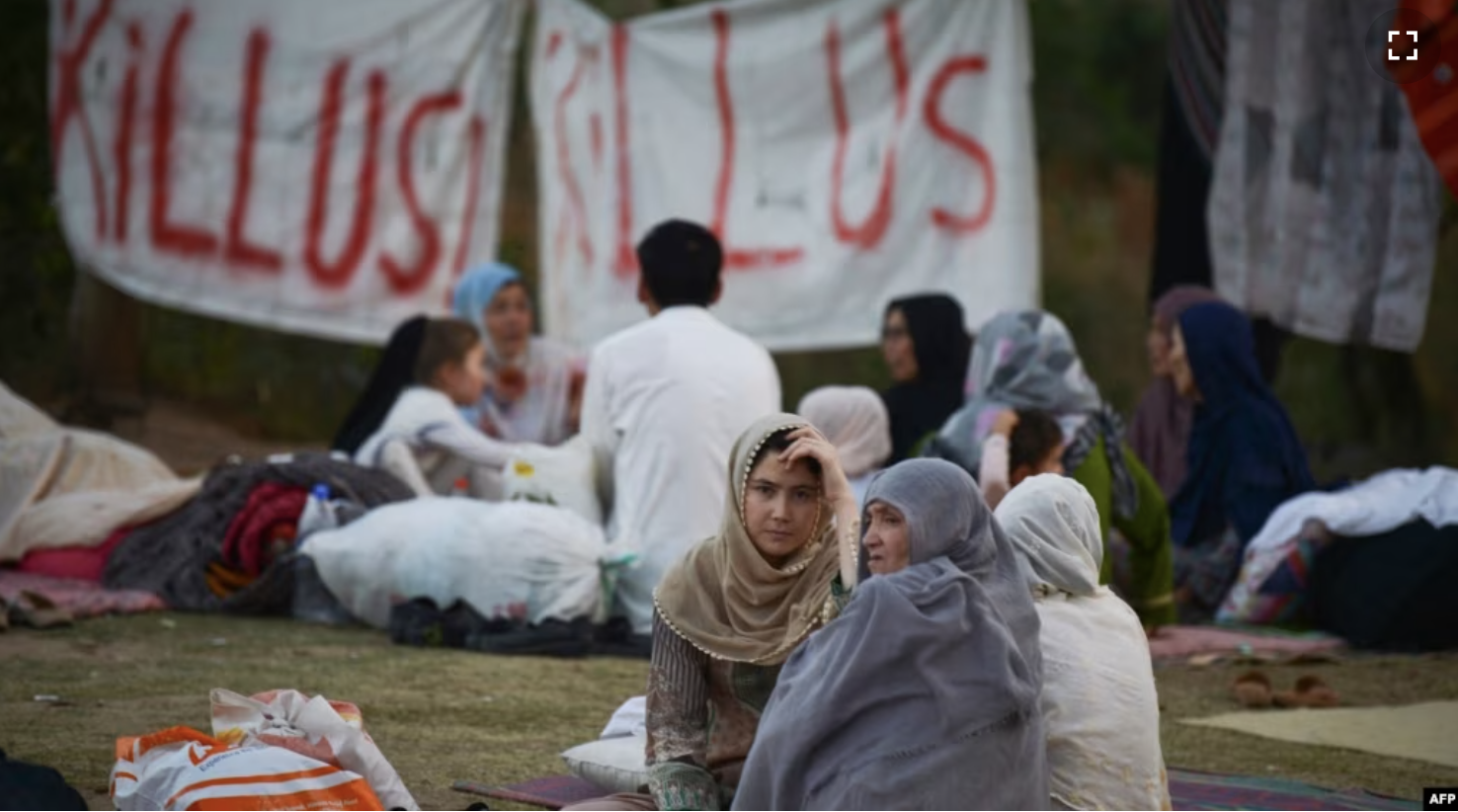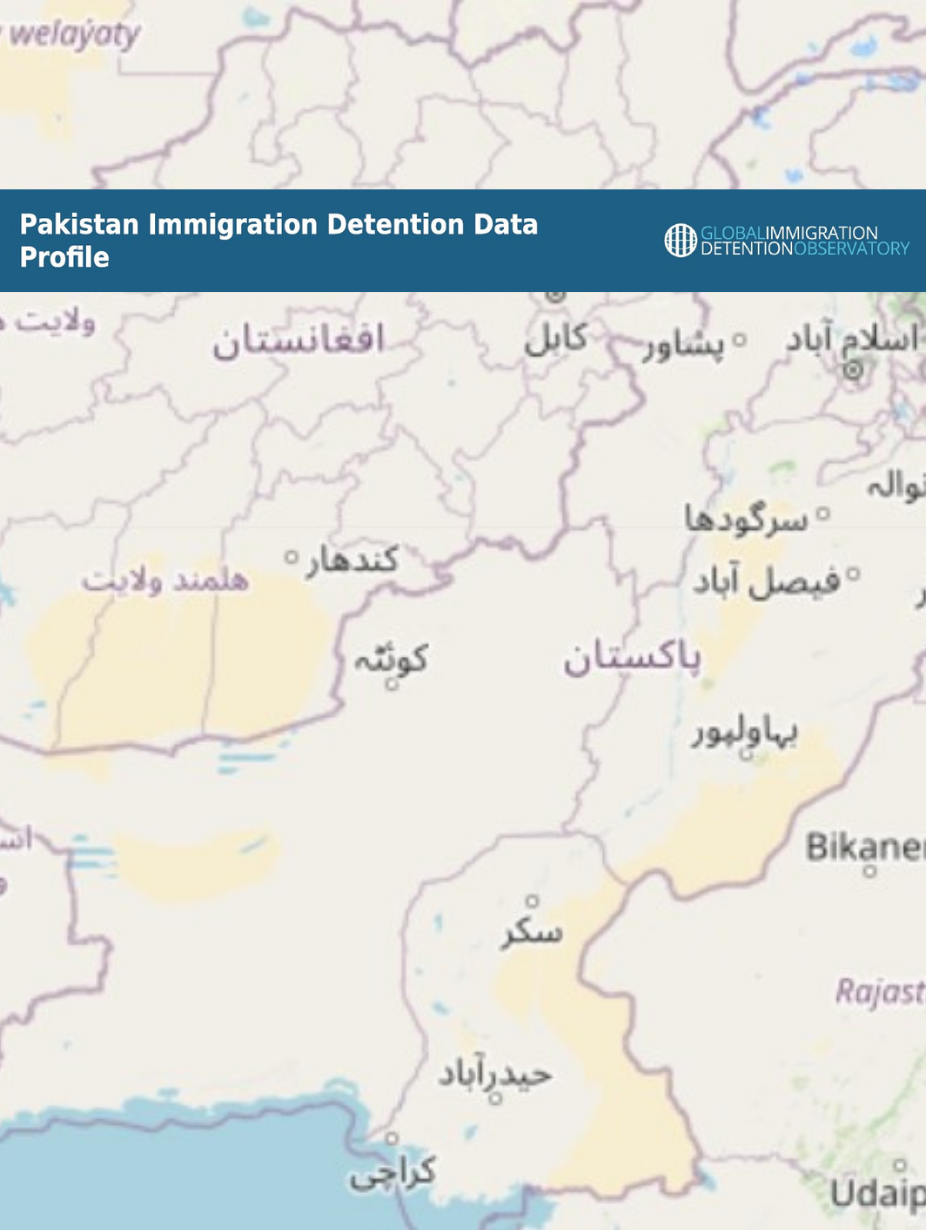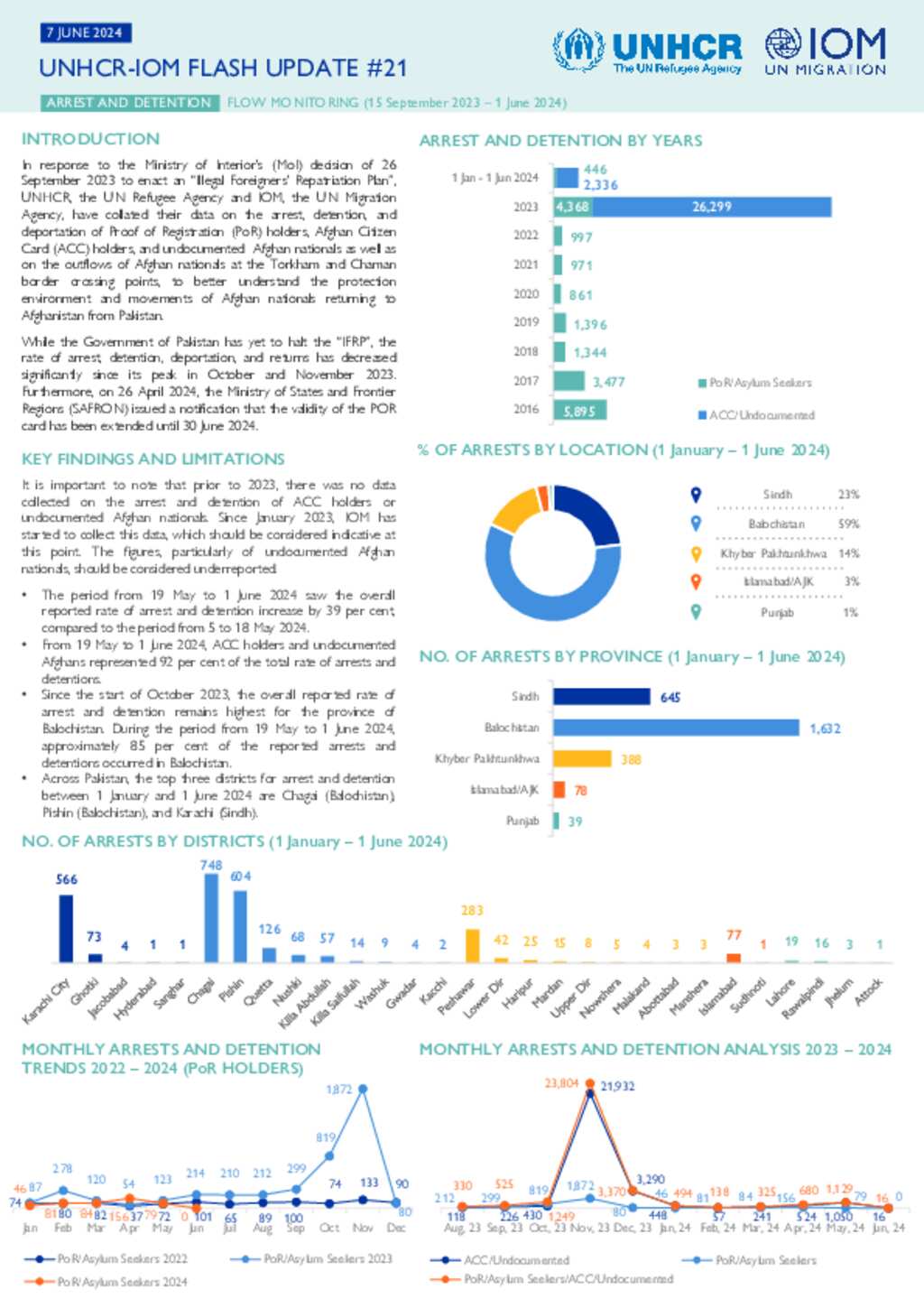Pakistan is one of the world’s largest refugee-hosting countries, with the majority of refugees coming from Afghanistan. The country has not implemented a national asylum system and it is not a party to the UN Refugee Convention. There have been numerous reports of refugees being arrested during raids, arbitrarily detained, and summarily deported. In 2023, […]
Afghan Refugees Ordered to Leave Pakistan, or Face Deportation
Amidst a crackdown against undocumented Afghans residing in the country, Pakistan’s authorities have ordered all undocumented Afghans to leave by 1 November or face deportation. In recent weeks, hundreds of refugees have been arrested and detained on the grounds that they do not have adequate paperwork. According to reports, at least four refugees have died […]

Pakistan: Covid-19 and detention
There are reports indicating that Pakistani authorities have taken some steps to mitigate the impact of the virus on the country’s prison population, which includes non-citizen detainees imprisoned under the 1946 Foreigners Act. The government has suspended visits to penitentiaries and court hearings. On 16 March, the Sindh provincial government began screening inmates and prison […]

Last updated: June 2024
Pakistan is one of the world’s largest refugee-hosting countries, with the majority of refugees coming from Afghanistan. The country has not implemented a national asylum system and it is not a party to the UN Refugee Convention. There have been numerous reports of refugees being arrested during raids, arbitrarily detained, and summarily deported. In 2023, the Ministry of Interior implemented a new “Illegal Foreigners' Repatriation Plan," which led to a sharp increase in the numbers of people detained and deported from the country.
In response to this mass crackdown on undocmented foriengers in the country, UNHCR and the IOM began systematically documenting and reporting arrest and detention data in Pakistan, published in UNHCR-IOM Flash Updates. Below we provide excerpts from the 7 June 2024 Flash Update.
UNHCR-IOM FLASH UPDATE #21
INTRODUCTION
In response to the Ministry of Interior's (MoI) decision of 26 September 2023 to enact an “Illegal Foreigners' Repatriation Plan”, UNHCR, the UN Refugee Agency and IOM, the UN Migration Agency, have collated their data on the arrest, detention, and deportation of Proof of Registration (PoR) holders, Afghan Citizen Card (ACC) holders, and undocumented Afghan nationals as well as on the outflows of Afghan nationals at the Torkham and Chaman border crossing points, to better understand the protection environment and movements of Afghan nationals returning to Afghanistan from Pakistan.
While the Government of Pakistan has yet to halt the “IFRP”, the rate of arrest, detention, deportation, and returns has decreased significantly since its peak in October and November 2023. Furthermore, on 26 April 2024, the Ministry of States and Frontier Regions (SAFRON) issued a notification that the validity of the POR card has been extended until 30 June 2024.
KEY FINDINGS AND LIMITATIONS
It is important to note that prior to 2023, there was no data collected on the arrest and detention of ACC holders or undocumented Afghan nationals. Since January 2023, IOM has started to collect this data, which should be considered indicative at this point. The figures, particularly of undocumented Afghan nationals, should be considered underreported.
The period from 19 May to 1 June 2024 saw the overall reported rate of arrest and detention increase by 39 per cent, compared to the period from 5 to 18 May 2024.
From 19 May to 1 June 2024, ACC holders and undocumented Afghans represented 92 per cent of the total rate of arrests and detentions.
Since the start of October 2023, the overall reported rate of arrest and detention remains highest for the province of Balochistan. During the period from 19 May to 1 June 2024, approximately 85 per cent of the reported arrests and detentions occurred in Balochistan.
Across Pakistan, the top three districts for arrest and detention between 1 January and 1 June 2024 are Chagai (Balochistan), Pishin (Balochistan), and Karachi (Sindh).
KEY FINDINGS
- During the last two weeks, UNHCR and IOM’s Displacement Tracking Matrix (DTM) estimate 21,031 Afghans returned through the Torkham, Ghulam Khan (located in Khyber Pakhtunkhwa), Chaman, Badini and Bahramcha (located in Balochistan) border crossing points to Afghanistan.
- Cumulatively, from 15 September 2023 to 1 June 2024, 610,751 individuals have returned.
- The number of returns in the last two weeks (19 May - 1 June; 21,031) increased by 43 per cent compared to returns in the two weeks prior to that (5 May - 18 May; 14,692). The number of returns during this reporting period has seen an increase compared to the previous report and continues to surpass the weekly return figures recorded since January 2024.
- Most of the returnees were undocumented Afghans (89%), followed by PoR holders (9%) and ACC holders (2%). Majority of the POR returns are facilitated by UNHCR.
- Vulnerable persons including chronically ill people, elderly individuals, persons with disabilities, and others account for 3 per cent of the population.
- Fear of arrest (89%) remains the most common reason to return to Afghanistan among undocumented/ACC holders while PoR holders cite social economic challenges.
- Returnees were most likely to return from Quetta (20%) and Peshawar (17%) in Pakistan and intend to go to Nangarhar (25%), Kandahar (23%) and Kabul (17%) in Afghanistan.
For more information:
DETENTION STATISTICS
DETAINEE DATA
DETENTION CAPACITY
ALTERNATIVES TO DETENTION
ADDITIONAL ENFORCEMENT DATA
PRISON DATA
POPULATION DATA
SOCIO-ECONOMIC DATA & POLLS
LEGAL & REGULATORY FRAMEWORK
Does the Country Have Specific Laws that Provide for Migration-Related Detention?
GROUNDS FOR DETENTION
LENGTH OF DETENTION
PROCEDURAL STANDARDS & SAFEGUARDS
COSTS & OUTSOURCING
COVID-19 DATA
TRANSPARENCY
MONITORING
NATIONAL HUMAN RIGHTS MONITORING BODIES
NATIONAL PREVENTIVE MECHANISMS (OPTIONAL PROTOCOL TO UN CONVENTION AGAINST TORTURE)
NON-GOVERNMENTAL ORGANISATIONS (NGOS)
GOVERNMENTAL MONITORING BODIES
INTERNATIONAL DETENTION MONITORING
INTERNATIONAL TREATIES & TREATY BODIES
International Treaties Ratified
Ratio of relevant international treaties ratified
Relevant Recommendations or Observations Issued by Treaty Bodies
> UN Special Procedures
> UN Universal Periodic Review
REGIONAL HUMAN RIGHTS MECHANISMS
HEALTH CARE PROVISION
COVID-19
Country Updates
Government Agencies
Ministry of Human Rights: http://www.mohr.gov.pk/
Ministry of Law and Justice:https://molaw.gov.pk/index
International Organisations
UNHCR Pakistan: http://unhcrpk.org/
IOM Pakistan: https://www.iom.int/pakistan
NGO & Research Institutions
Refugee Rights Network Pakistan: https://sharp-pakistan.org/about-us/networks-and-alliances/rrn-pakistan/
Pakistan International Human Rights Organization (PIHRO): http://pihro.org/




